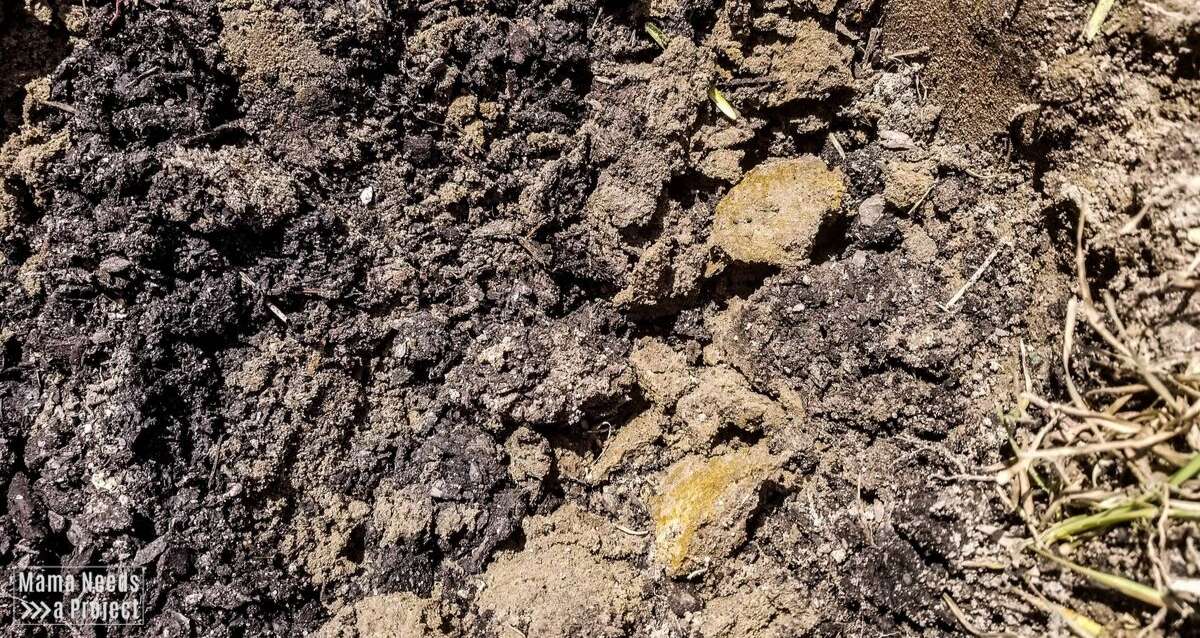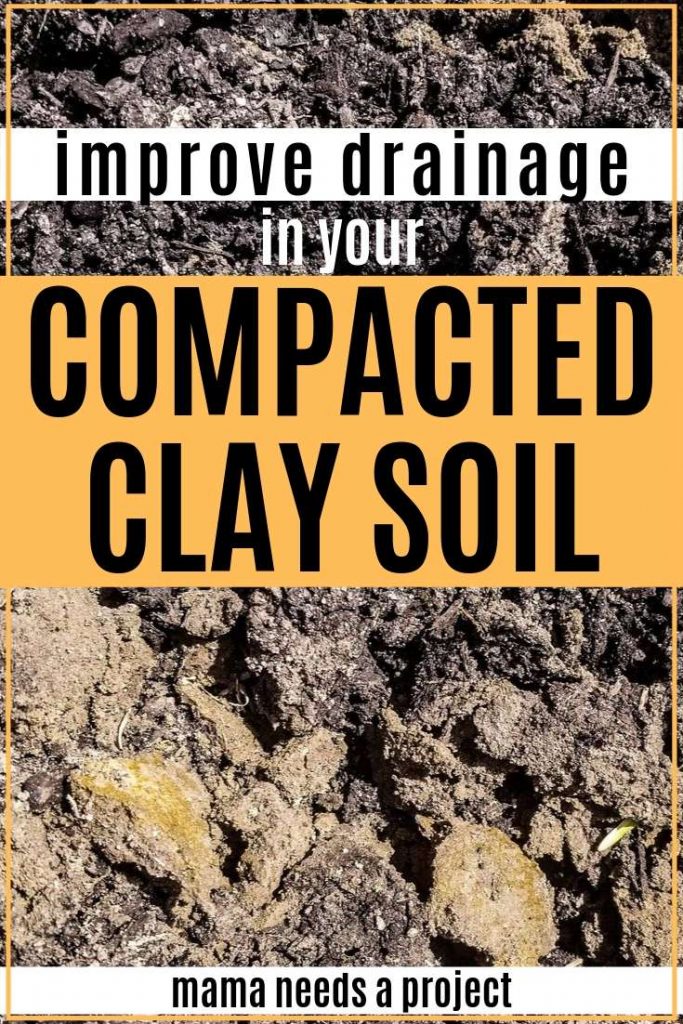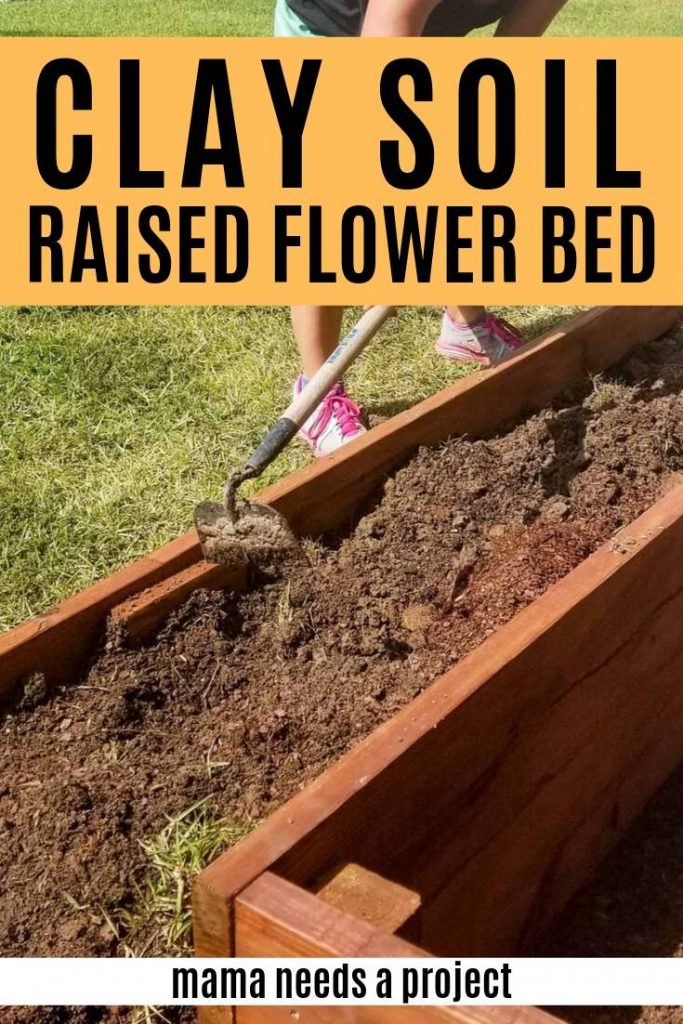Improving Clay Soil with a Raised Flower Bed
This post discusses the steps I am taking to improve existing soil and add new soil in my raised flower bed on clay soil.
I recently finished building this BIG raised flower bed on the clay soil in front of my home. The project was sparked by years of trying to grow a garden in this area only to have my plants drown due to the compacted sand and hard red clay that make up the soil in this area.
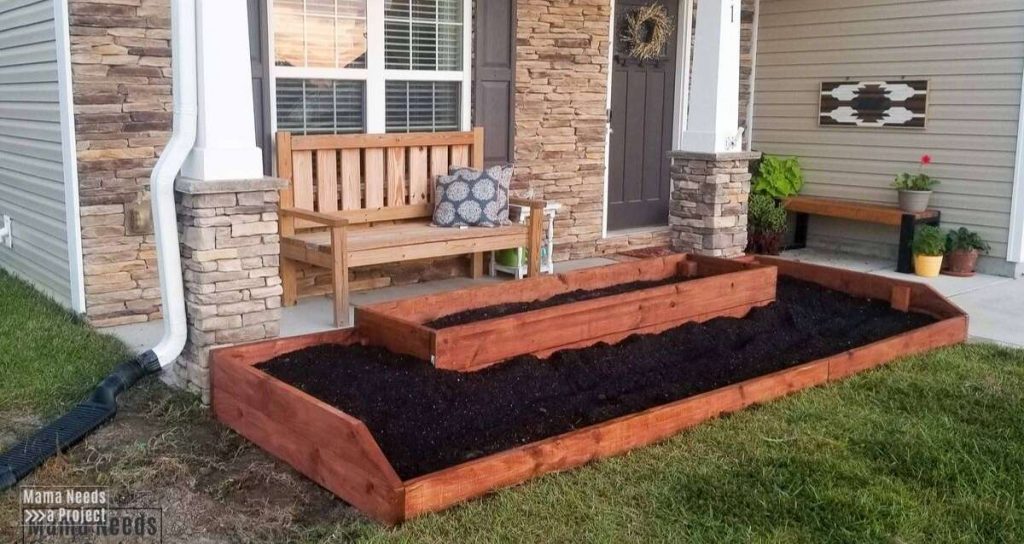
For the month of September I’ve been working through a few projects to improve the curb appeal of my home with a Budget Front Porch Makeover. So far I’ve completed a Modern 2×4 Bench, DIY Geometric Wall Art and the Raised Flower Bed.
The most intimidating project within my Budget Front Porch Makeover has definitely been this front flower bed. I’ve lived in my home for 5 years and struggled every year to get anything to grow here due to the dense clay soil. I’ve spent so much money on plants and soil amendments with no results.
See how terrible it looked before!
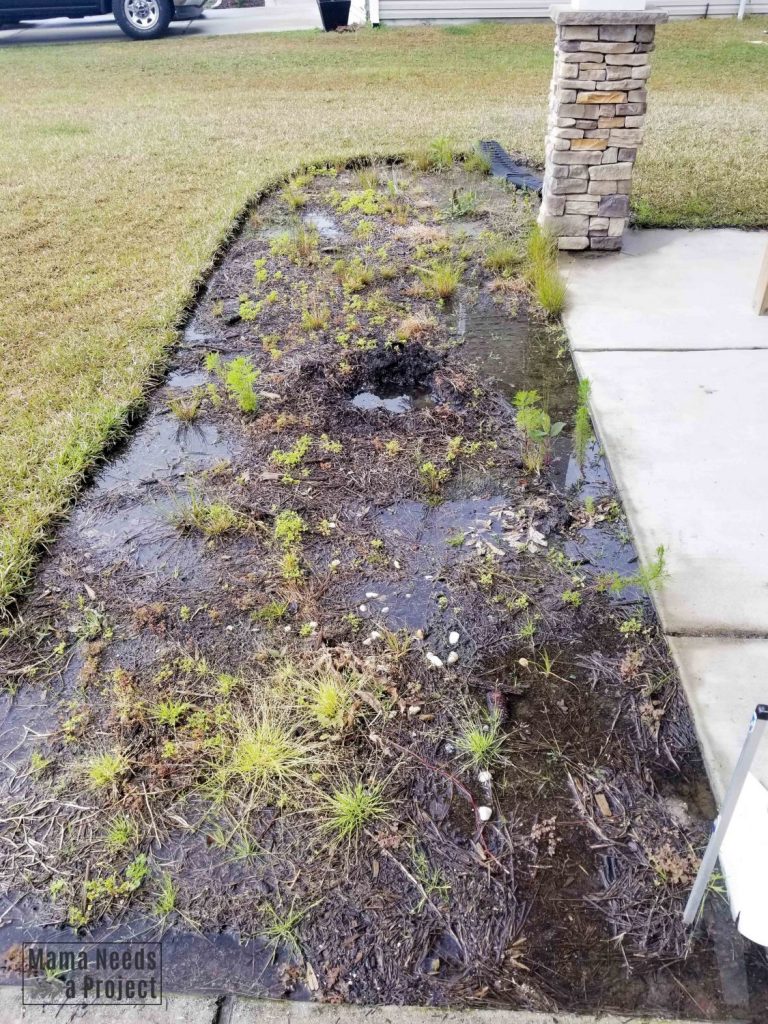
The dense clay and heavy sand were seriously compacted in this little garden area. This created serious drainage problems. Every time it rains this area floods! And standing water will pool on top for a day or more.
Nothing I have planted here has survived. And I’ve tried a lot!
So, after years of trying small fixes that didn’t work I decided to finally try something bigger by building a big raised flower bed on the clay soil. And I’m crossing my fingers that this is the solution that sticks!
But, I have never done this before. And, I won’t really know if this solution to my poor drainage works until I see if my plants survive the heavy rains in the spring.
Pin for later!
If you are looking to improve drainage in your clay soil, I recommend reading a few different resources to develop a plan that will work best for you. At the end of the post I will link some of the resources I found helpful.
What Makes Clay Soil Difficult
My Eastern North Carolina soil is a combination of dense red clay and fine sand. Together these ingredients create very heavy soil with poor drainage. The density of my clay soil doesn’t allow for much water to pass through. This results in standing water on top of the soil. Clay soil is also very susceptible to compaction which causes additional drainage and gardening issues.
Because of the hardness of the soil and poor drainage, it is difficult to garden in clay soil. Many plants aren’t able to grow roots strong enough to break through the clay. Additionally, because the clay holds so much water many plants experience root rot and drown.
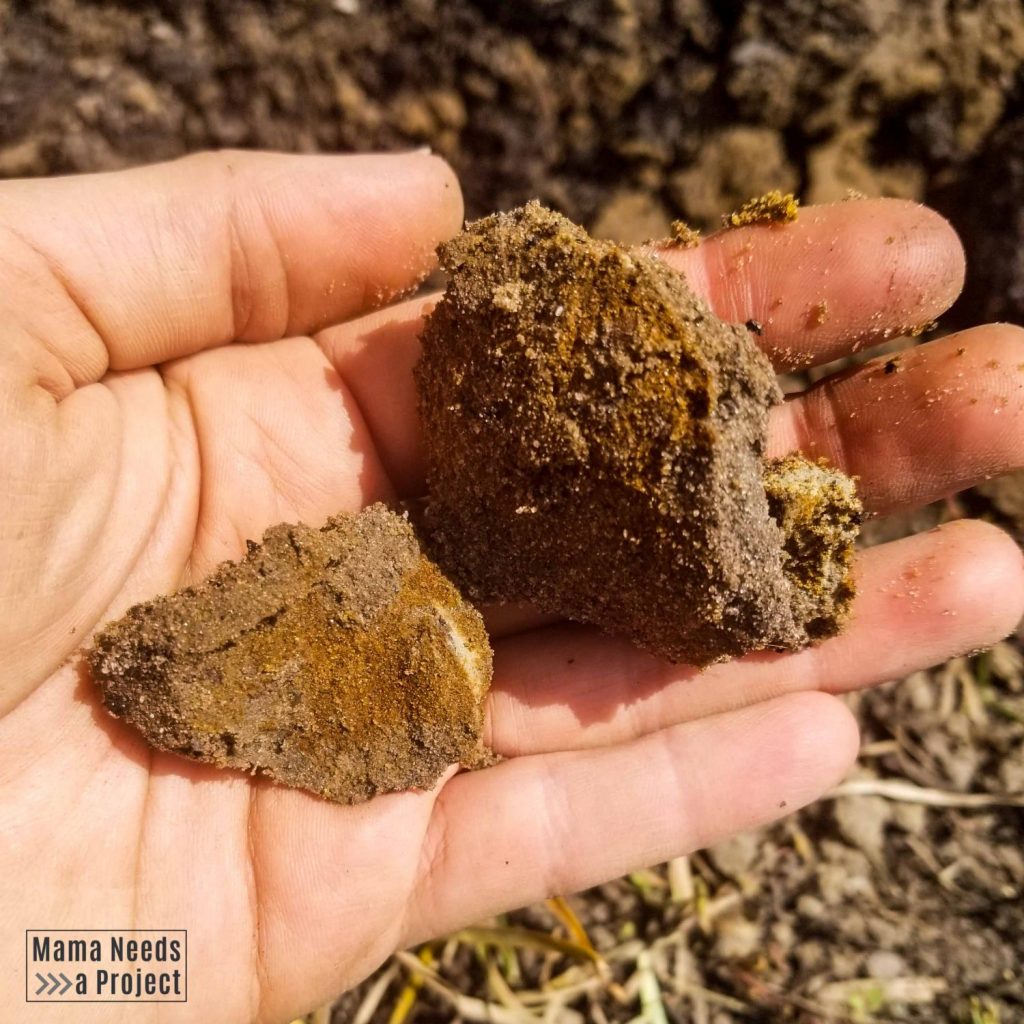
Why Compacted Soil is a Problem
One of the major issues with my flower bed is that the soil is heavily compacted. Compacted soil makes it difficult for water to pass through, resulting in standing water on top of the soil. Additionally, it is hard for plants to break through the soil to put out roots.
In the past when I had dug a hole and planted something new in this area I was basically planting in a clay pot with no drainage. The hole would fill with water every time it rained and would only drain out very slowly. The poor plants couldn’t break through the soil to put out roots and would just sit in the pool of water until the roots rotted and the plants died.
What Causes Compacted Soil
Compacted soil can be caused by a few different things. Heavy, persistent rainfall beating down on the soil can cause it to compact. It can also be caused by heavy foot traffic or machinery being driven on the soil. Much to my surprise, it can even happen from overworking the soil, especially when it is wet.
The Importance of Organic Matter
Organic matter is compost, manure or any other organic material that is added to soil. Adding organic matter to clay soil, especially compacted clay soil, adds “space” in the soil to allow for better drainage. Additionally, as it decomposes it feeds the soil with nutrients needed for healthy plant growth.
Pin for later!
My Plan for Improving Clay Soil with a Raised Flower Bed
Improving clay soil can take several years of working organic matter into the soil. I am not that patient, so I decided to build a raised bed on top of my clay and sand soil. This way I can fill the raised bed with new, nutrient rich soil and start gardening right away.
My concern with this plan is that the clay soil underneath will still hold water and so I may still have an issue with my plants drowning due to the poor drainage. So, in addition to building a raised bed for new soil, I decided to try to amend the top layer of existing soil underneath my raised flower bed. This is the process I’m following:
Break up Clay/Sand about 6”
The first thing I did to prepare the soil was to break it up about 6”-12” deep using a shovel. I used my shovel to turn the soil and break up the large chunks of compacted sand and clay. The sand and clay were heavily compacted so this was hard!

Mix in Soil Conditioner, Manure & Compost
After I finished breaking up the existing soil, I added soil conditioner on top. I then mixed the soil conditioner in by using my shovel to turn the soil again. Once the soil conditioner was mixed in, I added manure and compost and repeated the process.
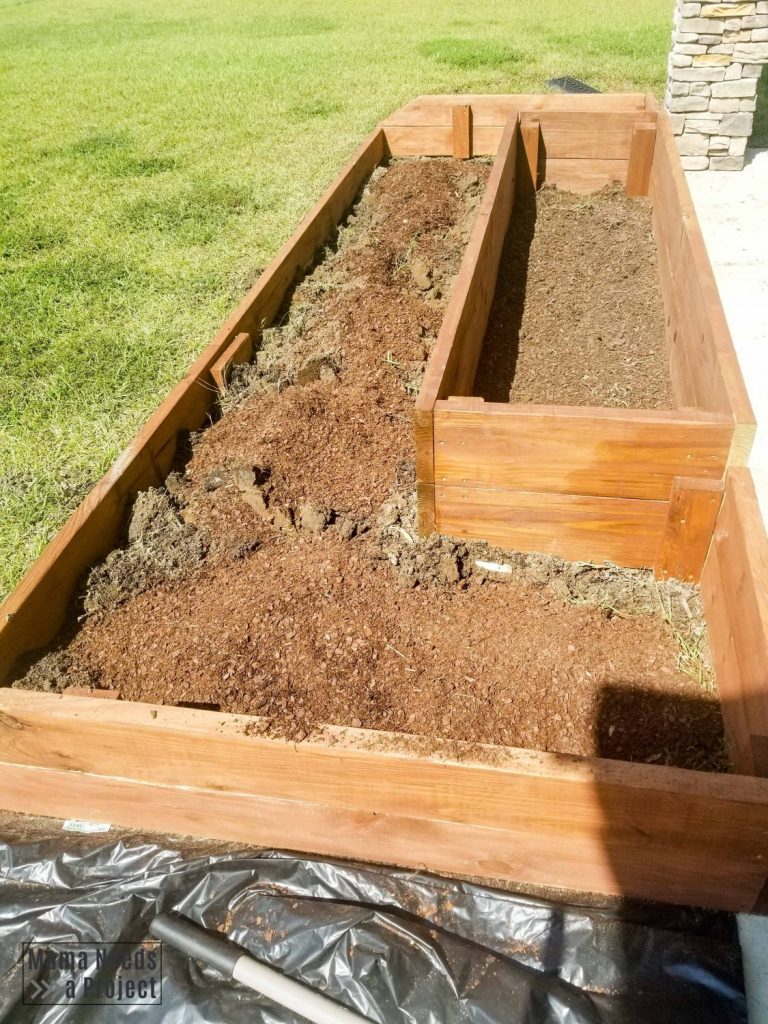
Add Topsoil
After adding the soil amendments to the existing soil, I added topsoil. Because this raised flower bed is so large, I actually purchased loose engineered topsoil and transported it in the bed of my truck. This was much cheaper than buying bags of soil (only $35!).
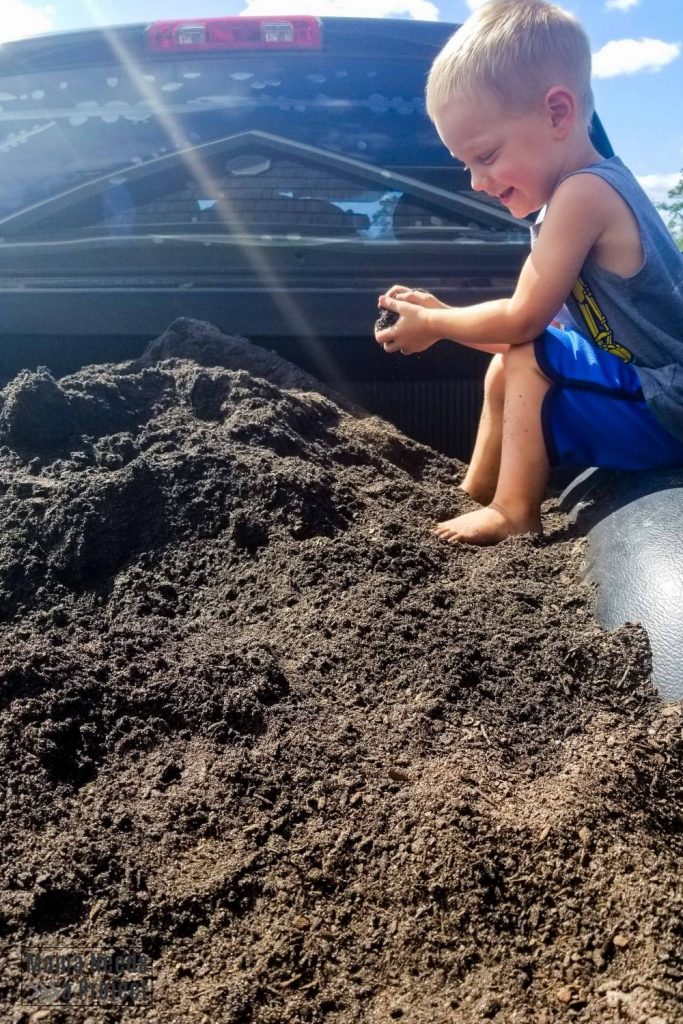
The truckload of soil almost filled the raised flower bed, but I will need just a little bit more to finish it off. I spread the soil in the garden bed so that it was higher in the back and lower in the front to promote downward drainage.
Water it Down
Once I had filled the bed with topsoil, I sprayed the soil with my hose so that the newly added soil would settle and I could see if I had any standing water. This isn’t a step that I read in any of my research – I’m just impatient and didn’t want to wait until it rains next to see if there’s a problem.
Heavy rainfall can compact soil and an intense flow of water through a hose can mimic that. So, I was careful to use the shower-spray setting on my hose.
After watering it down I didn’t see any issues in the larger part of the flower bed, but I did have some water pooling in the tall center box. This surprised me since this box had the most new soil. The water soaked in after some time had passed.
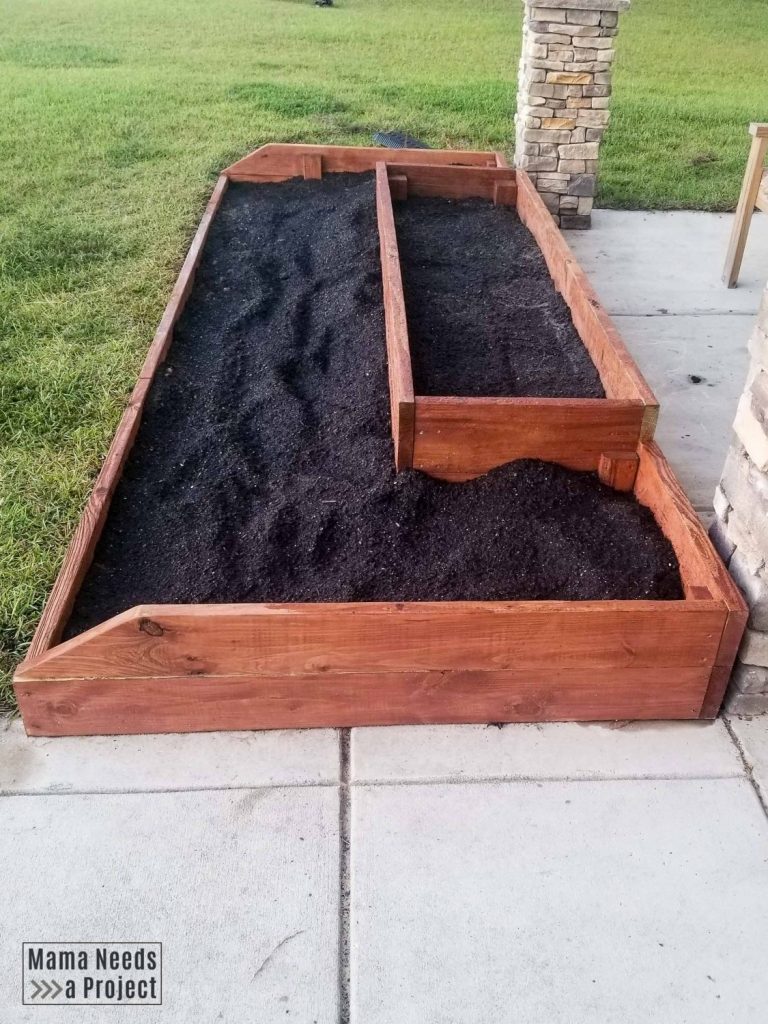
Let it Dry & Mix in More Organic Matter
I let the soil dry for a couple days. Then, I mixed a large bag of garden soil into the tall center box. I plan to add more soil the large box as well. Then, I will mix in a couple more bags of compost and manure.
I am waiting until I do my fall planting to add the final additions of organic matter. In Eastern North Carolina it stays hot late into the year so I won’t do any fall planting until late October or early November.
Cover with mulch for winter
Later this year, after I finish my fall planting I will add a layer of mulch on top of the soil. The mulch helps to protect the soil from compacting due to heavy rainfall. It will also help prevent weeds.
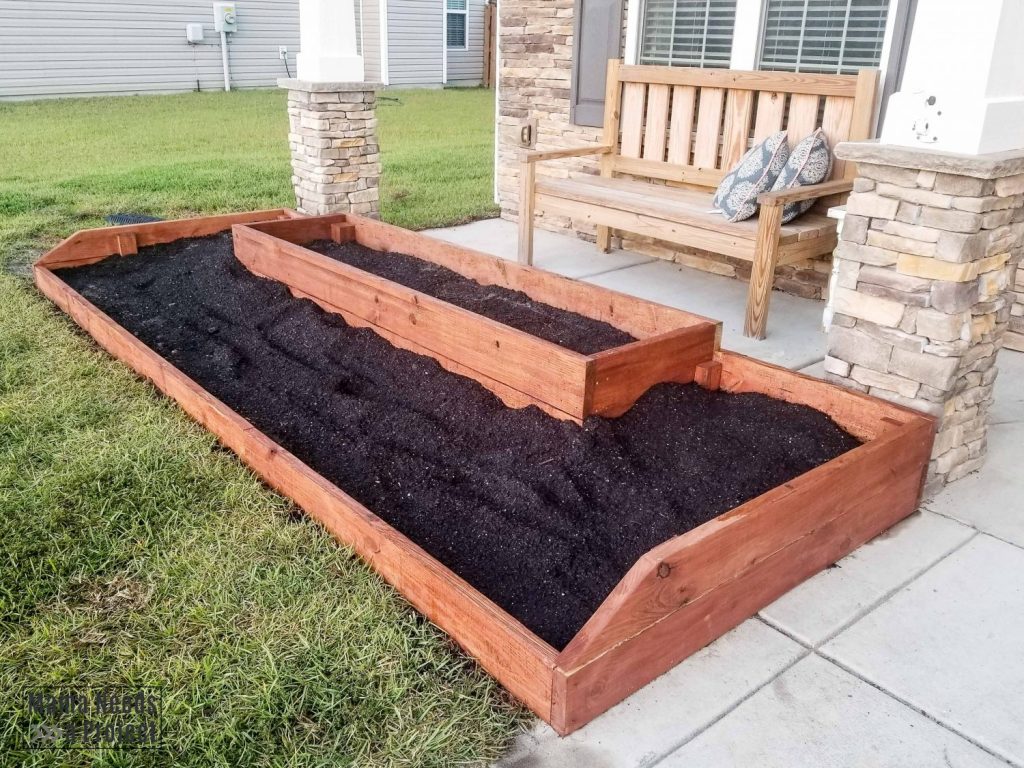
Raised Flower Bed on Clay Soil
I am so excited to see the results of all of this hard work next spring! Learning how to garden in clay soil has been a whole new experience for me and one that has been very challenging. But, I’ve learned that there are ways to work with clay soil to improve drainage and create a beautiful flower bed.
I’ll update with my results in the spring!
Additional Resources for Working with Clay Soil
- https://www.thespruce.com/improve-clay-soil-1315822
- https://www.gardenupgreen.com/2017/11/how-to-quickly-amend-clay-soil.html
- https://www.gardeningknowhow.com/garden-how-to/soil-fertilizers/improving-compacted-soil.html

